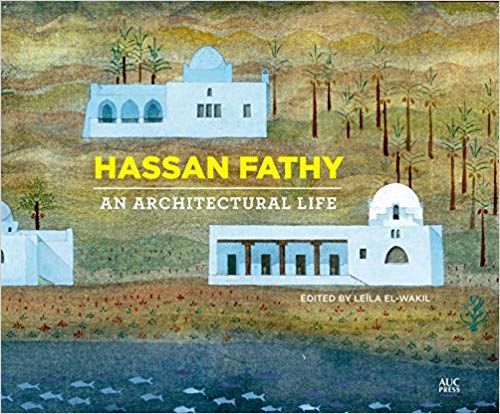
Hassan Fathy: An Architectural Life
Tom Verde
Leila El-Wakil, ed.
2018, AUC Press, 9-789-77416-789-8, $95 hb.
Esteemed Egyptian architect Hassan Fathy (1900–1989) regarded himself “as not simply a builder but a ‘scientist’”—a spiritual successor to ancient Egypt’s most-renowned architects, such as Imhotep and Amenhotep, who, in his words, “had a profound understanding of the widest implications … of architecture.” These ranged, in his estimation, from the practical (astronomy, mathematics) to the ethereal (philosophy). Despite these lofty job qualifications, the project for which Fathy is most fondly and reverently remembered is his plan for the village of New Gourna (1945–48), an affordable housing development partially built on the west bank of the Nile in Luxor. Using local materials, traditional building practices and energy-conservation techniques, Fathy envisioned what he termed “Architecture for the Poor,” also the title of his 1975 book on the project. This richly illustrated ode to Fathy’s life and career features essays by 11 Egyptian and international scholars.
You may also be interested in...

Umayyad Family Dynasty Creates Unprecedented Empire
Explore the development and history of the Umayyad Caliphate, one of the most consequential empires the world has ever known.Celebrate Women's History Month With These Reads on Women Throughout History
To help honor Women’s History Month, AramcoWorld brings you a list of 10 female-focused reads that celebrate women throughout history.
British Library’s 500-Year-Old Nizami Manuscripts Shed Light on Power of Art and Poetry in 12th-Century Herat
Persian and Mughal scholar and specialist Barbara Brend presents a comprehensive study of one of the most highly esteemed works of Persian Literature.